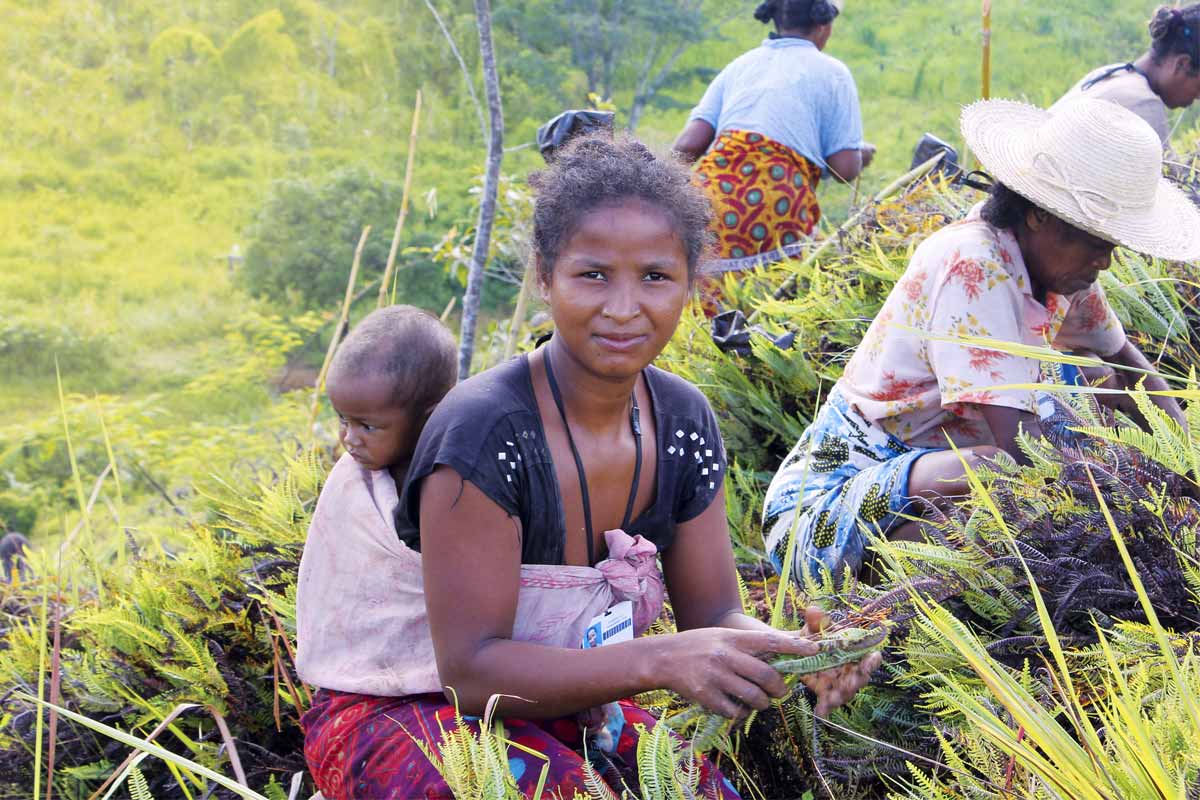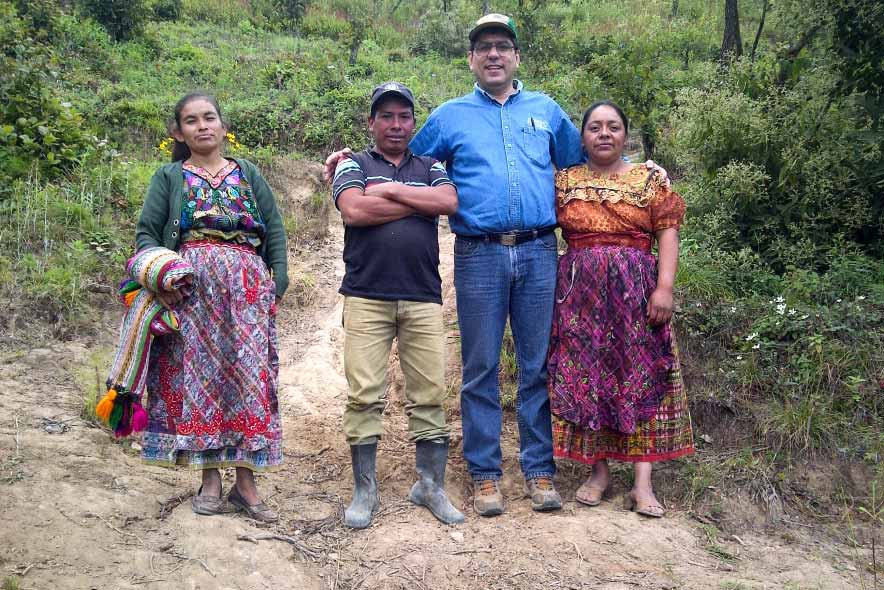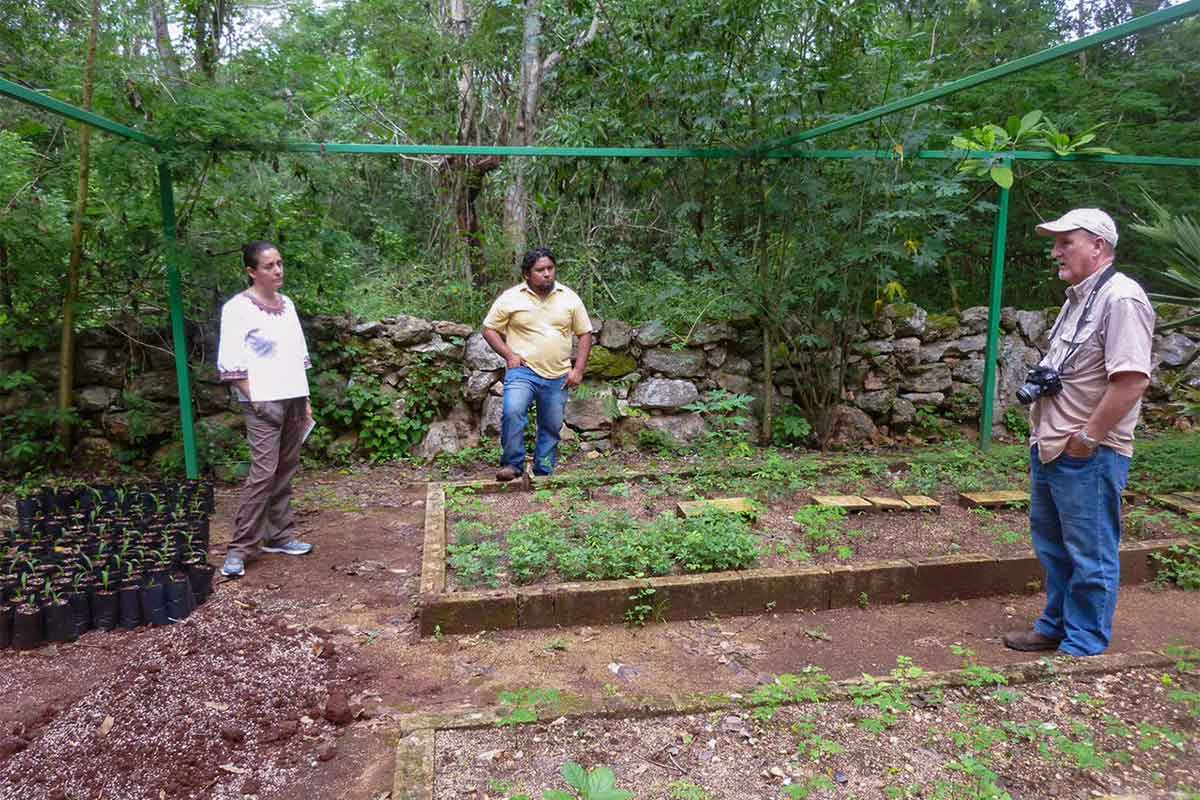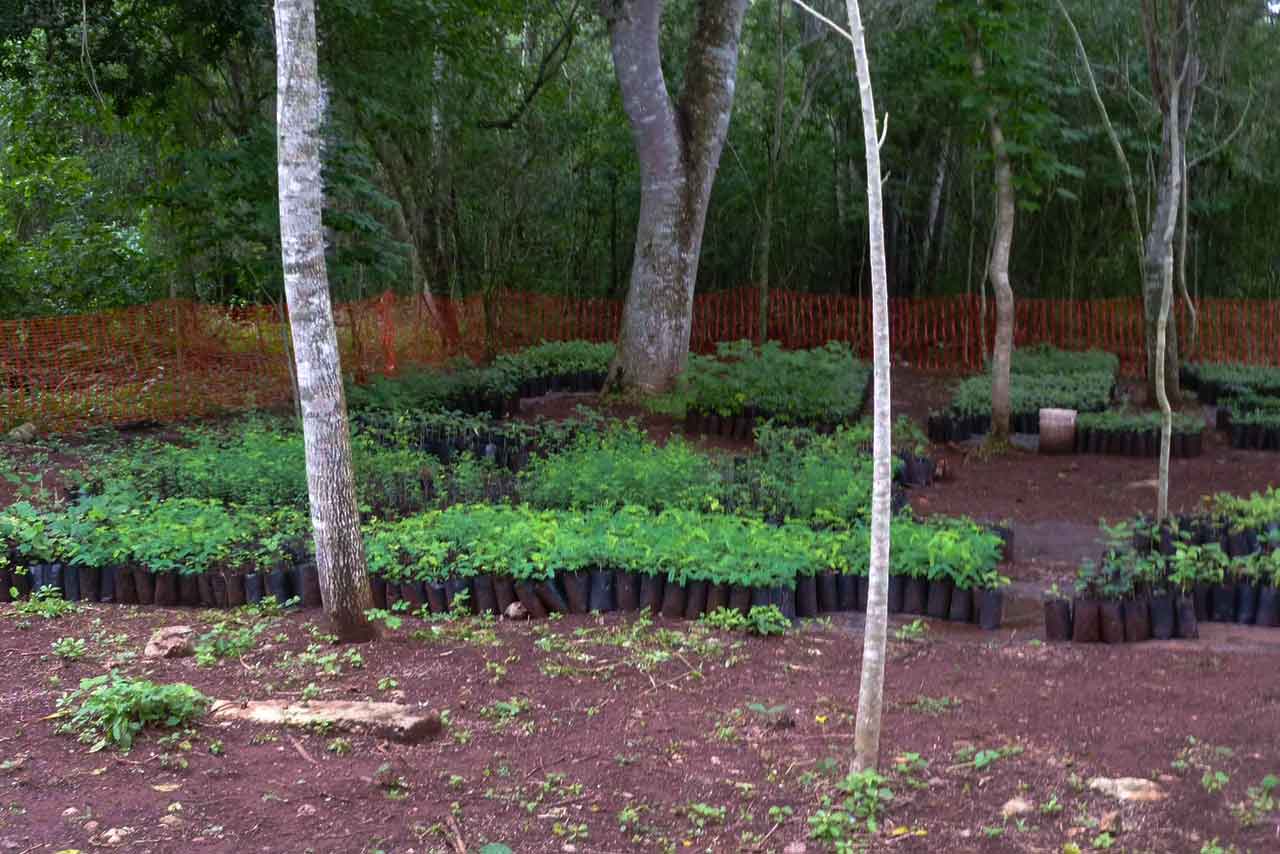2014 Rain Forest Rescue Report
Each year, the generosity of Arbor Day Foundation members and friends makes it possible to save remnants of the world’s remaining rain forests and restore land that has been devastated by unsustainable practices. This year we are proud to report on successful Rain Forest Rescue projects on opposite sides of the globe that are making a difference for local communities and giving all of us hope for the future.
Local Involvement in Madagascar

In the 2013 Rain Forest Rescue Report, we shared the urgent needs in the island nation of Madagascar along with an innovative restoration project headed by Arbor Day Foundation partners at Omaha’s Henry Doorly Zoo and Aquarium.
Madagascar is home to the loveable and critically endangered lemurs, a species found in the wild nowhere else on earth. But Madagascar’s lush rain forests have been clear-cut for decades, destroying the habitat of these curious and useful little creatures. In fact, aerial photos and remote sensing have found that approximately half the rain forests that were present in 1950 are now lost. The plan devised by geneticist Dr. Edward E. Louis Jr. and described in our 2013 report is helping to stop the destruction. It is also helping to connect remnants of rain forest through planting projects that provide corridors for wildlife and food that is essential for the survival of lemurs.
A critical component of the plan is local people. Without the understanding and support of the people that reside in or near a rain forest and rely upon it for their sustenance, conservation efforts are virtually impossible. In the regions of Madagascar receiving Rain Forest Rescue funds, more than 1,000 local residents are being included in growing and planting trees. A key organization that helps facilitate this is Vehivavy Vonona, which roughly translates to “the ready women.”
The Ready Women are single mothers struggling to support their families. This group weeds in the tree nurseries, prepares compost, and transplants seedlings into reforestation areas. They are also sharing with their communities their newly-gained knowledge of the need for conservation and the sustainable practices that can make it possible.

Suzanne Boahariva has been a member of Vehivavy Vonona since 2012. She is a mother of seven children, six of whom are now grown. With the supplemental income she earns from the Rain Forest Rescue project in her community, she has been able to send her youngest child to school. From her work on the project, she says, I have learned even more about germination and fruiting trees.
She has transferred this knowledge to her own garden as well as the nearby areas of reforestation. She says, I am excited to see the trees growing so well.
Elia Rolland Raharinirina is an excellent example of how the educational value of the project is spreading. Elia now understands the importance of protecting the rain forest in Madagascar and its relation to soil erosion and water conservation. She says, I was able to teach some of my village of Ambalahosy how to plant trees with the skills I learned.
She has also helped them understand the disadvantages of slash and burn agriculture that is so common throughout the country.
In addition, they have developed a distinct understanding of the disadvantages of slash and burn agriculture. Baotina, another passionate Vehivavy Vonona member, states, I have started to teach my family about not burning the forest and to protect the environment. I look forward to having more people help me to mobilize my community.
Many other members of Vehivavy Vonona have expressed interest in working with their respective communities to provide education about the importance of the program and the need for additional community involvement. The women are spearheading educational campaigns about composting, including placing informational signs next to community composting pits encouraging families to sort trash and to learn what material is appropriate for composting. They are also conducting presentations about tree planting and how composting contributes to its success.
Thanks to member donations to Rain Forest Rescue, new and important leadership is being developed in Madagascar. This, combined with carefully planned restoration projects, is making a significant difference and will help ensure wildlife habitat for the future and a sustainable landscape for the people that share this amazing land.
Guatemalan Highlands

Guatemala is one of the most ecologically diverse countries on the planet. Its mountainous volcanic lands, coastal lowlands and rain forests form microclimates that house an astounding variety of both plant and animal species. Unfortunately, some 180,000 acres of forest are lost annually to development and agriculture. As hillsides are cleared, the people become vulnerable to landslides and floods the availability of fresh water is reduced because the trees no longer filter rain water to replenish the aquifers.
Rain Forest Rescue funds are being used in the Guatemalan Highlands to stabilize steep slopes, protect watersheds and provide sustainable living conditions. Working through The Nature Conservancy and several other local and international partners, these funds have helped to plant more than two million trees, protect existing forest, create shade-grown coffee farms, install agroforestry systems with native species, and leverage additional funding from the government of Guatemala.

Highlights of this year’s accomplishments in Guatemala include:
- Creation of partnerships that include key stakeholders.
- Completion of a ‘vulnerability assessment’ to identify zones most prone to suffer from droughts, floods, mudslides, erosion or fire—and use of this information to prioritize tree planting.
- Selection of nonprofit partners to implement reforestation activities at the community level.
- Planting of 49 acres of native Guama trees to improve livelihoods and reduce vulnerability within an indigenous group of the Ilix area.
- Planting of 42 acres of timber and non-timber products to increase community income.
- Negotiations with forest owners and the local Forest Service to reforest and protect 100 acres of rain forest.
- Leverage of $210,000 from the National Government to support local community efforts to replant and protect area forests.
One of the important partners in this project is a women-led cooperative, Semillas del Bosque, or “Seeds of the Forest.” This group has collected seeds from the natural forests to establish a tree nursery with a capacity to grow 100,000 trees. Native species selected for the nursery are: cypress, alder, three kinds of pines and various oaks. Production is currently underway with planting scheduled in 2015.
Mexico’s Yucatan Peninsula

Portions of the Yucatan Peninsula are part of Selva Maya, the largest remaining tropical rain forest in the Americas. This large, diverse forest provides refuge for countless rare and endangered species such as the white-lipped peccary, tapir, scarlet macaw, harpy eagle and howler monkey. But the expansion of traditional ranching and agriculture is driving a land conversion in this region of Mexico, leaving large portions of rain forest cleared.
Working with The Nature Conservancy and local partners, progress is being made to reforest and protect the area.

Highlights of this year’s accomplishments in Mexico include:
- Continued work with local partner Kaxil Kiuic to operate a nursery for collected seeds. It has produce 50,000 trees in 2014 for the reforestation of former agricultural land and is set to produce another 50,000 trees in 2015.
- Restoration work in the Puuc Biocultural State Reserve to work toward the goal of 123 restored acres.
- Maintenance of 250 acres of restored land, including monitoring reforested acres and replanting trees that may have died during the summer.
- Support for implementation of a forest inventory and forest management plan with Ejido 20 de Noviembre. The plan promotes sustainable forest practices that will ensure economic stability as well as protection of the forest.
- Continuation of work with surrounding ejidos (community organizations) to promote agroforestry and silvopastoral systems rather than the traditional clearing of land for cattle ranching. Silvopastoral practices combine trees, pastures and livestock.
The need continues to save the world’s rain forests and the birds, mammals and other wildlife that depend on this unique habitat. In many cases, there is no tomorrow for these areas without action today. Please help continue the vital work of Rain Forest Rescue.
Donate Now